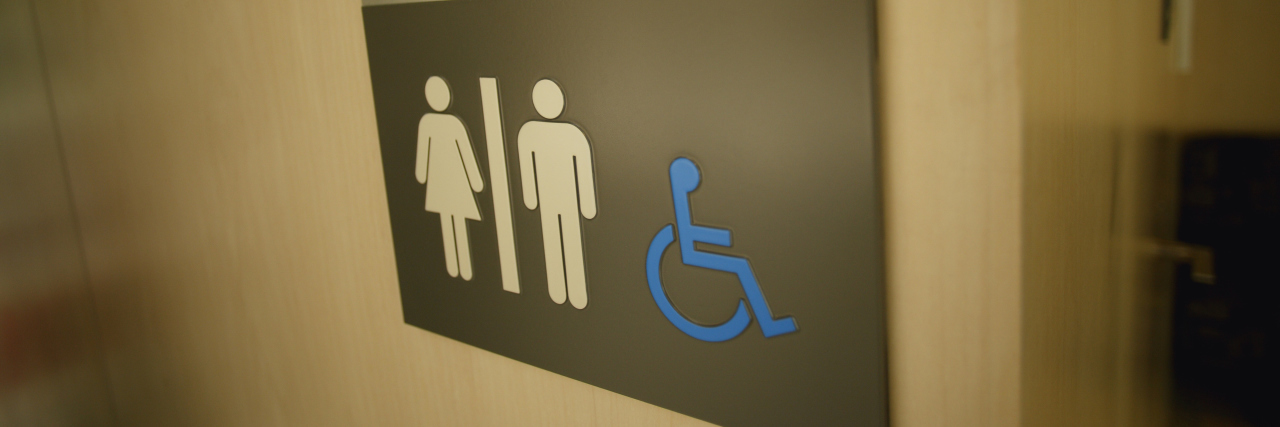There have been two occasions in my life where I have had a legitimate cause to use disabled accessible toilets in public. The first, nearly 10 years ago, was when I dislocated my knee and ruined my ligaments skiing. I was on crutches and couldn’t bend my left leg, meaning I had to leave it sticking out in front when I sat down. I’m a tall girl and it was just too cramped for me to safely and comfortably use a public toilet. Hobbling along on my crutches, I “happily” entered the disabled toilet cubicle, did my business and left again. No one batted an eyelid, and indeed some people gave me a knowing, understanding look; one person even held the door open for me. These people — these strangers — could see my (temporary) disability and understood why I might need to use the disabled toilet. No questions asked.
The second time was a couple of days ago. Except this time I had no crutches. I had no wheelchair, no mobility aid, no outward sign that I might need to use the accessible stall. The only clue was hidden away in my handbag; a pouch bursting with hygiene products, antibacterial wipes, incontinence supplies, anesthetic gels and spare caps. You see, 10 days ago I was admitted to the emergency room with acute urinary retention – basically I was, for reasons unknown, unable to pee by myself. I hadn’t passed water for nearly 24 hours and was in agony. I was fitted with a catheter and sent on my way. Having not had a catheter before, this took some getting used to — emptying the leg-bag, and then when I got a valve, learning to empty my bladder without spraying pee everywhere! In my own bathroom at home, this was easy. At home, I have lots of space. I have ledges where I can put things while I work systematically through the process to enable me to pee. In public toilets, I don’t have that space. I don’t have the surfaces I can clean and put my things on. I don’t have the quiet which I need to be able to hear when my bladder has stopped emptying because I can’t feel when it’s empty. And so I need to use the disabled toilets.
The problem with this is that because people can’t see my (temporary) disability, they instantly believe I am trying to cut in line, or be lazy, or using something which I am not entitled to. This judgment is so acutely felt that despite really needing to use the disabled toilet, I feel shamed into using the regular ones, which aren’t suitable for my needs. I am so worried about contamination, or space, or emptying my bladder that I cannot finish completely and have to leave still needing to pee.
I am lucky though. For me, this situation will hopefully be temporary and last at most a few months. My other invisible illnesses — i.e. my mental health — do not require me to use a disabled toilet. But there are plenty of people whose invisible illness does require them to use a disabled toilet. My friend who has severe IBS frequently requires use of RADAR key controlled bathrooms (a RADAR key is issued in the U.K. to people who need to use public disabled toilets which are only accessible with a special key to stop others abusing them), but people who look at her wouldn’t understand why. And my fortunately temporary situation has just hammered home how quick people are to judge and tut, to shame and bad-mouth people without knowing the full truth.
I have an idea that if I were to be challenged over my disabled bathroom use, I would calmly ask the person whether they would like to see my catheter and explain why I have to use that particular bathroom. I really hope that in that situation I would be able to stand up for myself, and by proxy for everyone else who has had their invisible illness shamed. And if I can’t, then please do it for me. Do not let yourself be bullied by ignorant people who don’t know any better. Educate them, explain, do not be embarrassed. I can only do a tiny bit to help end the stigma behind invisible illnesses, but together we are strong, and together we are one.
We want to hear your story. Become a Mighty contributor here.
Thinkstock photo by Design Pics.

